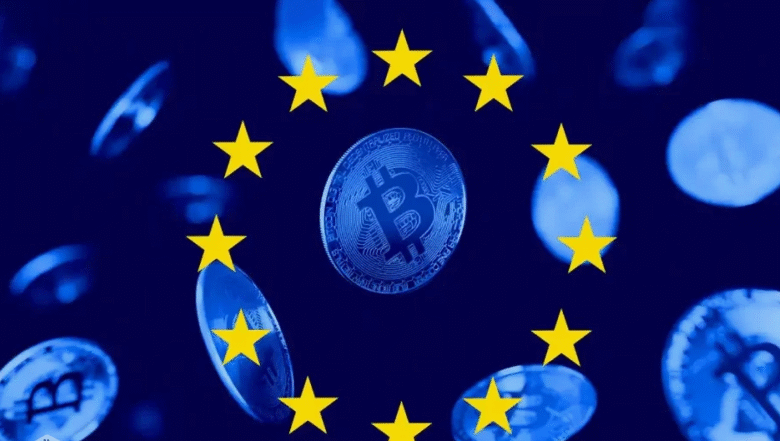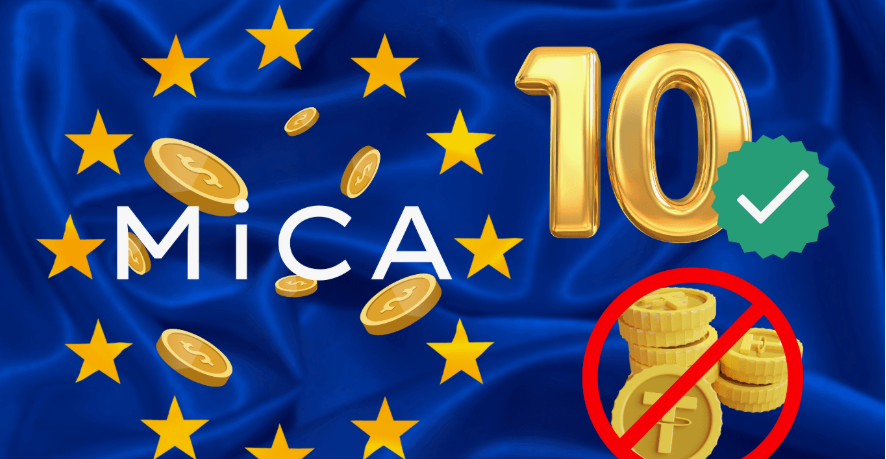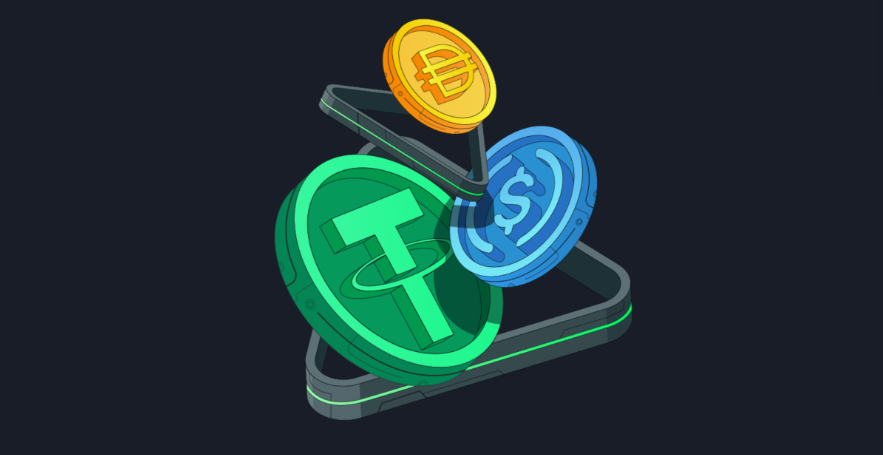Future of Stablecoins in the European Market: 2025 MiCA Regulation Guide

The future of stablecoins in the European market stands at a pivotal crossroads as regulatory frameworks reshape digital finance across the continent. With the Markets in Crypto-Assets (MiCA) regulation now in effect and the digital euro on the horizon, European stablecoin adoption is transforming unprecedented proportions. This comprehensive analysis examines how regulatory compliance, technological innovation, and market dynamics are shaping the trajectory of stablecoins within Europe’s evolving financial ecosystem. Understanding these developments is crucial for investors, businesses, and financial institutions navigating the complex landscape of digital currencies in the world’s second-largest economy.
Current European Stablecoin Landscape
The European stablecoin market experienced remarkable growth in 2025, with euro-denominated stablecoins growing by 44% driven by increased demand for Euro-linked digital assets as investors sought alternatives to US Dollar exposure. This surge reflects a broader shift toward regional digital currency solutions and reduced dependency on USD-based stablecoins.
Currently, USD-based stablecoins account for approximately 90 percent of the market capitalization and over 70 percent of trading volume in Europe, underscoring the dominance of international stablecoins. However, this landscape is rapidly evolving as European regulations and market preferences drive demand for compliant, locally backed alternatives.
Key Market Players and Trends
Circle’s EURC stablecoin exemplifies the growth trajectory of European digital assets, surging 138% to reach a market capitalization of $200.36 million. This growth demonstrates increasing institutional and retail confidence in euro-denominated stablecoins that comply with emerging regulatory standards.
The market transformation extends beyond growth metrics to fundamental structural changes. Major cryptocurrency exchanges are already adapting their offerings to comply with new regulations. For instance, Coinbase delisted USDT for EU customers in December 2024, while Crypto.com will delist USDT and nine other tokens by March 31, 2025.
Transforming the Future of Stablecoins in the European Market
The Markets in Crypto-Assets regulation represents the most comprehensive crypto regulatory framework globally, fundamentally reshaping how stablecoins operate within European borders. The MiCA Regulation entered into force on 29 June 2023, with provisions applying from 30 December 2024, and provisions on stablecoins coming into force on 30 June 2024.

Compliance Requirements and Market Impact
Under MiCA, issuers are required to maintain sufficient reserves to cover all issued tokens and provide detailed information about the token’s functionality, associated risks, and underlying technology. These stringent requirements ensure only high-quality stablecoins can operate in the European market, potentially reducing systemic risks while limiting market options.
The regulation introduces specific operational constraints that directly impact the utility of stablecoins. MiCA regulation influences the utility and trading volume of stablecoins by capping daily payment transactions at €200 million, creating both stability measures and practical limitations for large-scale commercial applications.
Authorization and Licensing Framework
Starting January 2025, Crypto Asset Service Providers (CASPs) must begin applying for licenses to operate within the EU. This licensing requirement creates a regulated environment that enhances consumer protection while potentially raising barriers to entry for smaller players.
The authorisation process encompasses comprehensive oversight mechanisms, including operational resilience requirements. DORA becomes applicable on 17 January 2025 and introduces a harmonised and comprehensive framework on digital operational resilience for European financial institutions, including crypto-asset service providers.
Digital Euro vs. Private Stablecoins: Competition and Coexistence
The European Central Bank’s digital euro initiative adds another dimension to the future of stablecoins in the European market. ECB chief economist Philip Lane said Europe needs a digital euro to counter the foothold that stablecoins are gaining in the financial system, indicating potential competitive tensions between public and private digital currencies.
Strategic Positioning and Market Dynamics
European crypto rules: EU officials promote the digital euro as a mechanism for delivering strategic and economic autonomy relative to the US dollar. This strategic positioning suggests the digital euro serves dual purposes: competing with private stablecoins while reducing European dependence on foreign currency systems.
However, rather than viewing this as a zero-sum competition, the EU’s embrace of both a central bank digital currency and private cryptocurrencies could be a more promising strategy than either China’s or the US’s exclusive focus on one or the other. This balanced approach may create space for both public and private digital currencies to coexist and serve different market segments.
Innovation Through Competition
The presence of both digital euros and regulated private stablecoins could drive innovation across the sector. Central bank digital currencies provide stability and government backing, while private stablecoins offer flexibility, innovation, and specialized use cases that complement rather than replace public alternatives.
Technological Innovation Driving Market Evolution
The future of stablecoins in the European market extends beyond regulatory compliance to encompass technological advancements and improvements in user experience. European stablecoin projects are increasingly focusing on interoperability, sustainability, and integration with traditional financial systems.
Blockchain Infrastructure and Scalability
European stablecoin initiatives prioritize environmentally sustainable blockchain technologies, aligning with the EU’s broader sustainability goals. This focus on green technology creates competitive advantages for European stablecoins while addressing environmental concerns associated with cryptocurrency adoption.
Innovative contract capabilities are evolving to support complex financial instruments, enabling stablecoins to serve as building blocks for decentralized finance (DeFi) applications, cross-border payments, and programmable financial products that comply with European regulations.
Integration with Traditional Finance
The convergence of traditional banking and digital assets represents a significant opportunity for European stablecoins. Regulatory clarity under MiCA enables banks and financial institutions to explore stablecoin integration with greater confidence, potentially accelerating mainstream adoption.
Payment system integration remains a critical development area, with European stablecoins poised to complement existing payment infrastructure, offering enhanced efficiency, reduced costs, and improved accessibility for cross-border transactions.
Market Opportunities and Growth Projections
Cross-Border Payments Revolution
European businesses engaged in international trade represent a significant market for stablecoin adoption. Stablecoins offer advantages over traditional correspondent banking systems, including reduced settlement times, lower transaction costs, and 24/7 availability that aligns with global business requirements.
The regulatory certainty provided by MiCA creates confidence for institutional adoption, potentially driving significant volume growth as enterprises integrate stablecoin solutions into their treasury management and payment processing systems.
Financial Inclusion and Access
Stablecoins democratise access to stable, digital financial services across European markets, particularly benefiting underbanked populations and small businesses that face barriers with traditional banking services. Mobile-first stablecoin solutions can provide financial services in regions with limited banking infrastructure.
DeFi Integration and Yield Generation
Regulated European stablecoins serve as foundational assets for decentralized finance applications, enabling users to participate in lending, borrowing, and yield farming activities while maintaining regulatory compliance. This integration expands the utility and demand for European stablecoins beyond simple payment applications.
Challenges and Risk Factors
Regulatory Complexity and Compliance Costs
While MiCA provides regulatory clarity, compliance requirements create significant operational costs and complexity for stablecoin issuers. These requirements may consolidate the market around larger players with sufficient resources to meet regulatory obligations, potentially reducing competition and innovation.
Market Fragmentation Concerns
The coexistence of national implementations of MiCA across different EU member states may create operational complexities for stablecoin providers operating across multiple jurisdictions, potentially fragmenting the European market despite harmonised regulations.
Competition from Global Players
European stablecoins face competition from established global players with significant network effects and liquidity advantages. Overcoming these competitive disadvantages requires substantial investment in user acquisition, partnership development, and technological innovation.
Technical and Security Risks
Cybersecurity threats, smart contract vulnerabilities, and operational risks continue to be significant concerns for stablecoin operators. Regulatory requirements for operational resilience under DORA add compliance layers while addressing these fundamental technical risks.
Industry Expert Insights and Market Predictions
Financial industry experts anticipate continued growth in the European stablecoin sector, driven by regulatory clarity, institutional adoption, and technological advancement. The combination of public and private digital currencies creates a unique ecosystem that may serve as a model for other regions.
Market analysts project that euro-denominated stablecoins will capture an increasing market share as European businesses and consumers prefer locally regulated alternatives to USD-based stablecoins. This trend aligns with broader European strategic autonomy objectives in the financial services sector.
The integration of artificial intelligence and machine learning technologies into stablecoin infrastructure promises enhanced fraud detection, improved regulatory reporting, and improved user experience, which could accelerate adoption rates across European markets.
Read More: Future of Stablecoins in the European Market 2025 MiCA Regulation Guide
Global Context and Competitive Positioning
The European approach to stablecoin regulation positions the region as a leader in balanced crypto regulation, potentially attracting international stablecoin issuers seeking regulatory clarity and market access. This regulatory leadership creates competitive advantages for European financial centres.
As of July 2025, a record high number of governments (forty-nine) have launched formal CBDC pilots, indicating global momentum toward digital currencies that could benefit European stablecoin development through increased acceptance and infrastructure development.
The European model of comprehensive regulation combined with innovation support may influence global regulatory approaches, creating opportunities for European stablecoin providers to expand internationally based on their compliance expertise and regulatory credibility.
Implementation Strategies for Businesses
Compliance Planning and Risk Management
Organizations considering the integration of stablecoins should develop comprehensive compliance frameworks that address MiCA requirements, operational resilience standards, and data protection regulations. Early preparation enables smoother implementation and competitive advantages in the evolving market.

Technology Infrastructure Requirements
Businesses must invest in robust technology infrastructure that supports the integration of stablecoins while maintaining security, scalability, and regulatory compliance. This includes secure wallet management, transaction monitoring, and reporting capabilities that align with regulatory requirements.
Partnership and Ecosystem Development
Strategic partnerships with regulated stablecoin providers, technology vendors, and financial institutions enable businesses to access stablecoin capabilities while minimizing compliance burdens and technical complexity. Ecosystem participation accelerates adoption and reduces the risks associated with implementation.
Regulatory Evolution and Future Developments
The regulatory landscape continues evolving as policymakers gain experience with stablecoin implementation and market dynamics. Future regulatory updates may address emerging use cases, technological developments, and cross-border coordination requirements that enhance the European stablecoin ecosystem.
International coordination between European regulators and their global counterparts will likely influence the development of stablecoin standards, interoperability requirements, and cross-border transaction frameworks, thereby expanding market opportunities for compliant European stablecoins.
The development of regulatory sandboxes and innovation hubs presents opportunities for stablecoin developers to test new concepts while collaborating closely with regulators to inform future policy developments.
Investment and Market Development
Venture capital and institutional investment in European stablecoin projects has increased significantly as regulatory clarity reduces investment risks and market opportunities become more defined. This influx of capital supports technological development, market expansion, and enhanced competitive positioning.
The emergence of specialised stablecoin infrastructure providers creates opportunities for businesses to access stablecoin capabilities without direct regulatory compliance burdens, potentially accelerating adoption across various industry sectors.
Market maker and liquidity provider services designed explicitly for European stablecoins enhance trading efficiency and price stability, creating more attractive investment and usage propositions for institutional and retail users.
Conclusion
The future of stablecoins in the European market holds significant promise for transformation as regulatory clarity, technological innovation, and market demand converge to create unprecedented opportunities. MiCA regulation establishes Europe as a global leader in crypto regulation while ensuring consumer protection and market stability. The coexistence of digital euros and private stablecoins creates a unique ecosystem that serves diverse market needs while promoting innovation and competition.
For businesses, investors, and financial institutions, the time is now to develop strategies that leverage the opportunities presented by Europe’s evolving stablecoin landscape. The combination of regulatory certainty, technological advancement, and growing market demand creates compelling reasons to explore the future of stablecoins in the European market as a cornerstone of digital finance strategy.
FAQs
Q1. What is MiCA and how does it affect stablecoins in Europe?
MiCA (Markets in Crypto-Assets) is the EU’s comprehensive cryptocurrency regulation, which came into full effect in December 2024. It requires stablecoin issuers to maintain full reserves, obtain licenses, and comply with strict operational standards. This creates a safer but more regulated environment for European stablecoin operations.
Q2. Will the digital euro replace private stablecoins in the European Union?
The digital euro and private stablecoins are likely to coexist rather than compete directly. The digital euro provides government-backed stability for basic transactions, while private stablecoins offer innovation, specialized features, and integration with DeFi applications that serve different market needs.
Q3. How do European stablecoins compare to USD-based alternatives?
European stablecoins offer regulatory compliance, local currency backing, and alignment with EU strategic objectives. While USD-based stablecoins currently dominate, with larger liquidity and network effects, European alternatives are growing rapidly as businesses seek compliant, locally regulated options.
Q4. What are the main challenges for stablecoin adoption in Europe?
Key challenges include high compliance costs, operational complexity from MiCA requirements, competition from established global players, and the need to build user networks and liquidity. However, regulatory clarity and growing institutional interest are driving solutions to these challenges.
Q5. How can businesses prepare for the integration of stablecoins in Europe?
Businesses should develop compliance frameworks that address MiCA requirements, invest in secure technology infrastructure, establish partnerships with regulated providers, and establish risk management procedures. Early preparation enables competitive advantages as the market evolves.
